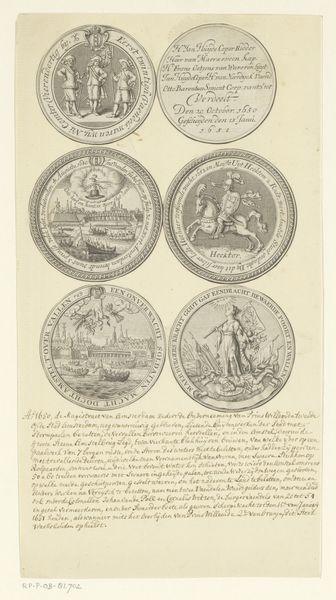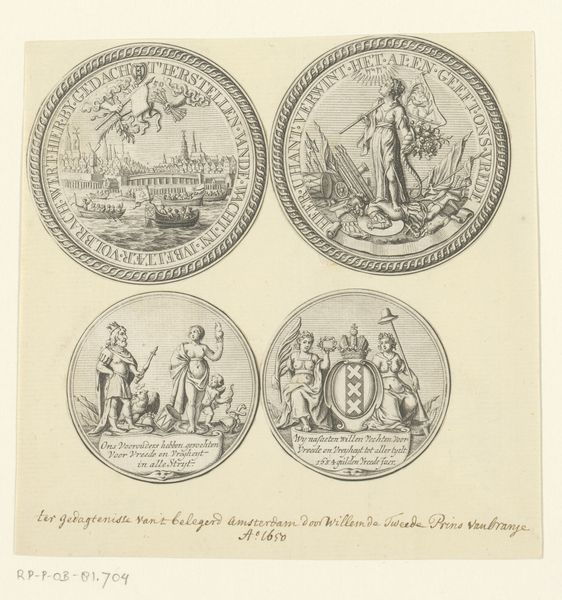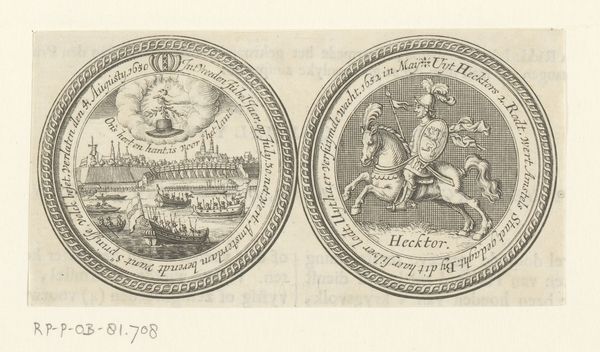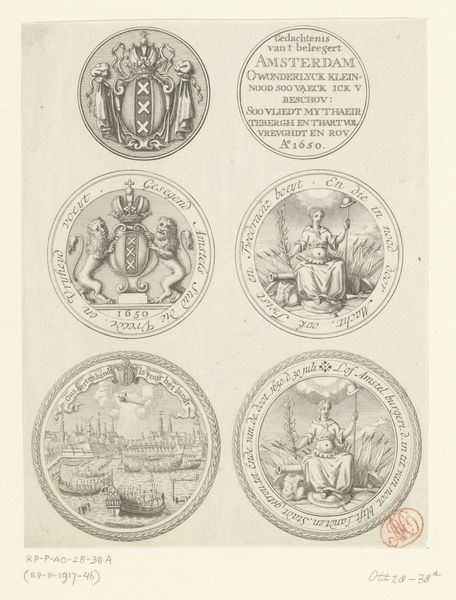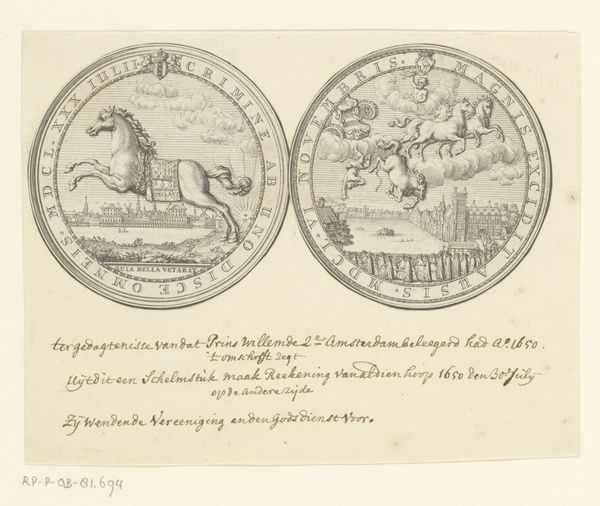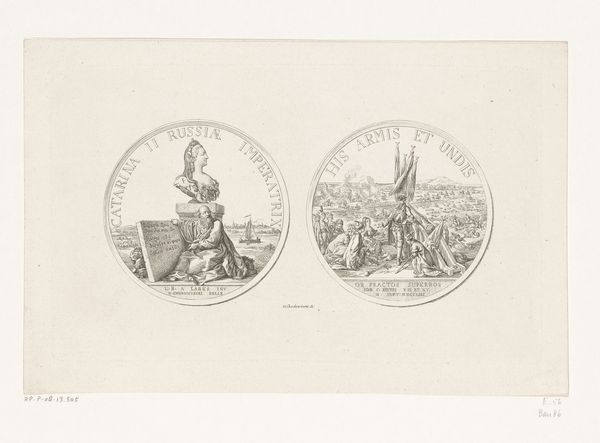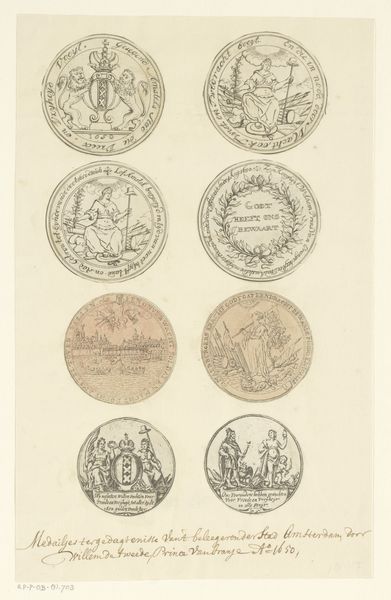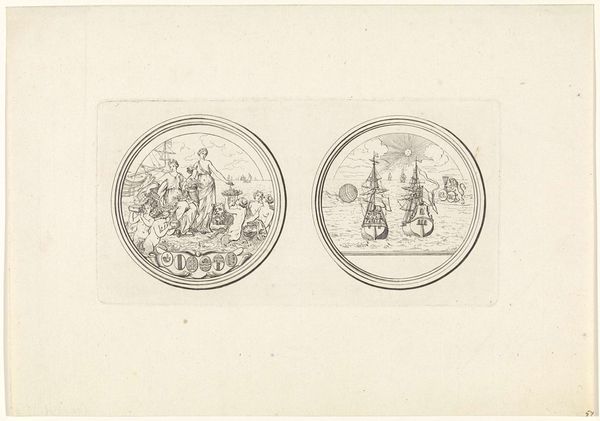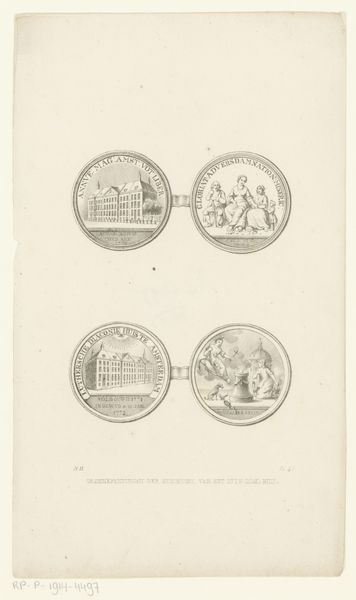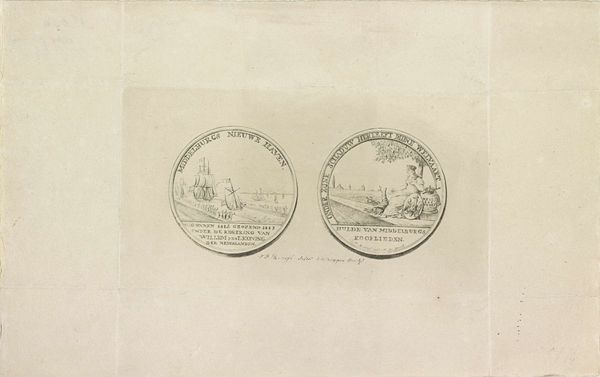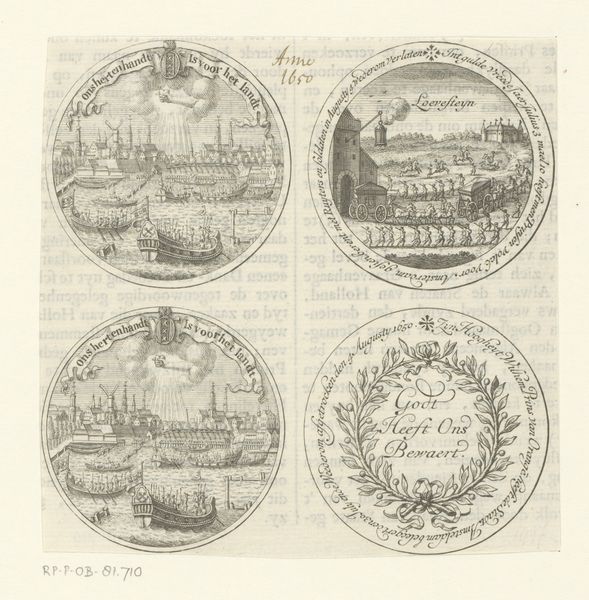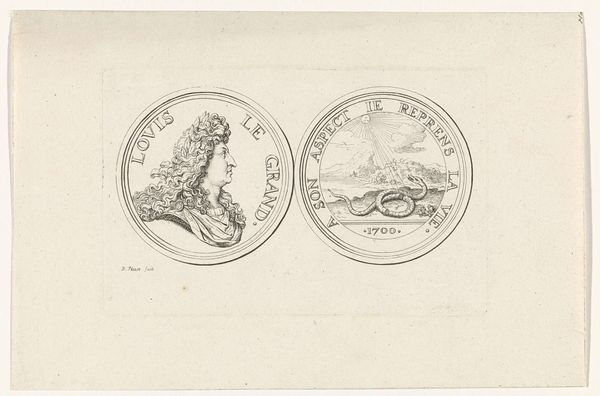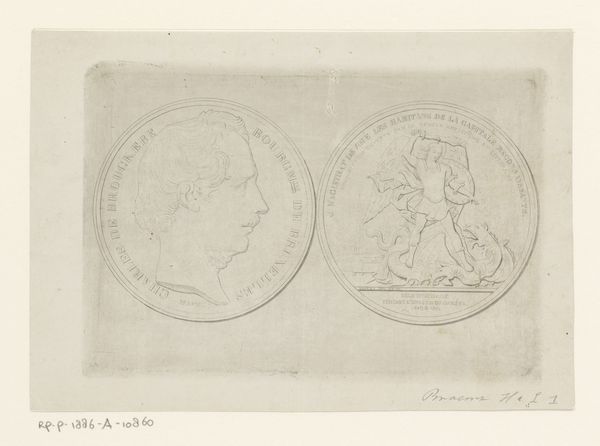
Twee penningen op het beleg van Amsterdam door Willem II, 1650 1724 - 1726
0:00
0:00
graphic-art, print, engraving
#
graphic-art
#
baroque
# print
#
old engraving style
#
cityscape
#
history-painting
#
engraving
#
monochrome
Dimensions: height 100 mm, width 135 mm
Copyright: Rijks Museum: Open Domain
Curator: This engraving presents "Twee penningen op het beleg van Amsterdam door Willem II, 1650," dating roughly between 1724 and 1726. The piece is currently held in the Rijksmuseum collection. Editor: They're almost like coins, aren’t they? The stark monochrome and precise linework give a sense of controlled historical narrative, but with a surprisingly intricate level of detail considering the apparent scale. Curator: Indeed. Each "penning," or medal, commemorates aspects of the siege. We should consider how these types of images functioned politically. Their distribution likely aimed to shape public opinion surrounding Willem II's actions. The institutional support and commission surrounding pieces like this really illustrate how artwork of the era could function. Editor: I see your point. But thinking about production – the fine lines achieved through engraving. I'm intrigued by the skilled labor involved, from the design itself to the meticulous act of cutting into the printing plate, consider what the labor conditions might have been. It begs questions about the economic structure supporting such artisanal practices, doesn’t it? Curator: Absolutely. The artisanship tells us so much about the social stratification, economic opportunities available. The piece as a historical object, tells the account of the relationship of Willem II and Amsterdam; also how printmaking disseminated particular narratives about it. Notice, for example, the symbolic imagery of Amsterdam subdued, juxtaposed with classical figures. This wasn't just informative; it was persuasive. Editor: Yes, and focusing back on the craft aspect reveals the material reality through repetitive, skilled manual labor—that really is central to understanding how imagery like this permeated society, it connects so closely to the mode of production and ultimately consumption by a public interested in history and art. Curator: The Baroque era excelled in utilizing visual symbolism. Each emblem here had a precise meaning for contemporary audiences, reinforcing or challenging established political stances and power dynamics. It makes it quite revealing, isn't it? Editor: Quite. When viewing through that historical perspective we start to notice the narrative through social and material conditions and consumption for public memory of political dynamics; both literally impressed on the coin, if you will.
Comments
No comments
Be the first to comment and join the conversation on the ultimate creative platform.
